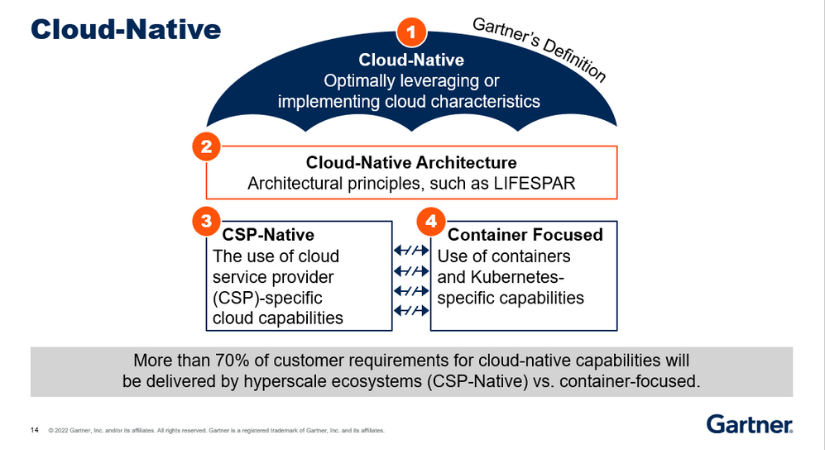We’ve all heard about the wonders of the cloud computing environment. But are company cloud strategies “in the clouds?” According to Gartner, a cloud strategy is a concise viewpoint on the role of cloud computing in the organization. As cloud computing evolves from technology enabler to business disruptor, IT leaders must understand their organization’s business strategy first, and then seek opportunities to leverage new and emerging cloud capabilities to accelerate that strategy.
There are four phases to cloud computing:
Phase 1: Cloud as Technology Disruptor
Phase 2: Cloud as Capability Enabler
Phase 3: Cloud as Innovation Facilitator
Phase 4: Cloud as Business Disruptor
Cloud drivers include cloud variations (such as hybrid IT and multi-cloud environments), which are now at the center of the cloud hype. In 2026, cloud spending is forecasted to exceed $1 trillion worldwide, exceeding all other IT markets. As infrastructure becomes more abstracted and invisible (delivered in a serverless way), I&O (infrastructure and operations) will focus less on deploying, provisioning, upgrading, and backing up environments and instead focus on infrastructure and application resiliency.
Companies should create cloud strategies that include architecture and governance by leading a CCoE (cloud center of excellence) and encouraging fusion teams. They can also improve spend by leveraging multiple cost optimization techniques and negotiating discounts with hyperscalers, very large cloud services providers such as AWS, Microsoft Azure, Google Cloud, Alibaba, and IBM, which together account for 80% of the public cloud market. It is important to support users and applications everywhere by redesigning for network inversion and by implementing DevSecOps—short for development, security, and operations— and ‘policy as code’ practices.

Policy as code defines, updates, shares, and enforces policies using code. The key word is code because this method codifies policies using a programming language. These codified policies can help enforce or test automation scripts to verify that they follow the defined policies.
The problem comes to a head when business and IT leaders make one—or worse, all—of the top 10 common mistakes when crafting their cloud strategy. Gartner believes a good cloud strategy should be a short and easy-to-read document, consisting of 10 to 20 pages or slides. In addition, the business strategy should drive the cloud strategy and provide guidance to those who will implement it. It must coexist with other strategic efforts, not try to redo them.
What are the Big 10 mistakes in the cloud? Business and IT leaders should collaboratively build a cloud strategy and avoid these mistakes when doing so:
1. Not an IT Only Strategy
Cloud computing isn’t only about technology. Those outside IT have skills and knowledge critical to cloud strategy success. Business and IT leaders should avoid the mistake of devising an IT-centric strategy and then trying to “sell it” to the rest of the business. Business and IT should be equal partners in the definition of the cloud strategy.
2. Have an Exit Strategy
Devising an exit strategy from cloud providers is difficult, which is one of the reasons why many leaders don’t create one. Many organizations believe they don’t need an exit strategy because they don’t expect to bring anything back from the cloud. However, an exit strategy is vital to the success of an organization’s cloud strategy. It’s like having an insurance policy that you hopefully will never need to use.
3. Cloud Strategy? Cloud Implementation Plan?
A cloud strategy is different from a cloud implementation plan and strategy must come first. It is the decision phase in which business and IT leaders decide the role that cloud computing will play in the organization. A cloud implementation plan comes next, putting the cloud strategy into effect.
4. Is It Too Late?
It is never too late to begin a cloud strategy. Remember, if an organization drives its cloud adoption without a strategy, ultimately that will cause resistance from individuals who are not aligned on the strategy’s key drivers and principles. As a result, this resistance will slow down cloud adoption and potentially jeopardize the entire cloud project.
5. We’re Moving Everything to the Cloud
Many organizations assume having a cloud strategy implies moving everything to the cloud. This approach deters many business and IT leaders from devising a strategy because they think it means they’ll be forced to start using cloud computing for everything. Organizations should keep an open mind and partner with a non-cloud technology expert, such as an enterprise architect, who can bring a broad viewpoint in defining the cloud strategy.
6. “Cloud Strategy = Data Center Strategy”
Many organizations confuse their cloud strategy with their data center strategy. While organizations need to keep them separate, they need to ensure they align with each other because that affects the role cloud computing will play in their organization. Cloud strategy decisions are workload by workload, not data center decisions.
7. An Executive Mandate Is a Strategy!
Another common mistake organizations make is to adopt cloud computing because the CEO, CIO, or the head of a business unit believes that doing so will result in cost savings. Gartner analysts recommend treating executive mandates as sponsorship to devise a cloud strategy and not as a cloud strategy in and of itself. The cloud strategy should also keep the connection to the business, ensuring that organizations know why workloads are moving and what the goal is.
8. The Vendor Is the Cloud Strategy
Organizations will likely use several different cloud services over time. As the use of cloud services could become increasingly broad and diverse, business and IT leaders should devise a broad strategy by accommodating multiple types of scenarios, cloud services, vendors, and non-cloud environments.
9. Outsourcing Your Cloud Strategy
Outsourcing an organization’s cloud strategy may sound attractive but should not be done—it is far too important to outsource. Instead, Gartner analysts recommend business and IT leaders use third parties—even the cloud provider—for implementation. This can be a cost-effective way of procuring the scarce cloud skills their organization needs.
10. Our Strategy Is Cloud First
A cloud-first approach means if someone asks for an investment, the default place for them to build or place the new asset is in the public cloud. But cloud-first doesn’t mean cloud only. If business and IT leaders adopt a cloud-first principle, their strategy should work out the exceptions to the default choice that will make applications and elsewhere other than in the cloud.
Want to tweet about this article? Use hashtags #construction #sustainability #infrastructure #cloud


